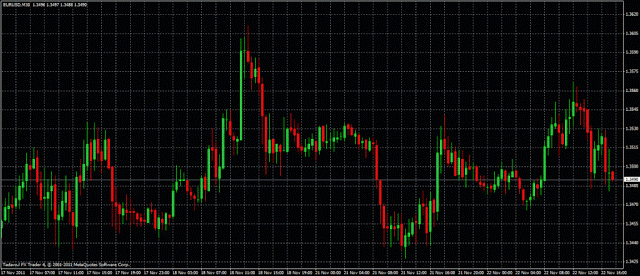Again, as long as I speak of losses, I must start this article by saying that is completely impossible to avoid losses. Sooner or later they come to all traders. A good trader simply accept them consciously, which also involves applying systematic rules to keep the losses well controlled.
This article will not discuss the position of the stop loss, it will focus on the loss limit on volume that should be applied in all trades. That is, the maximum amount of money that would be lost if the operation goes wrong. Knowing this amount is essential to calculate the size of the trade.
The basic concept: the loss limit as a protection mechanism
Each trader should establish, as part of its trading system, a loss limit, a maximum amount of money that he can lose in a single trade. It is very common to set this limit as a fixed percentage of total capital, usually the equity or balance. The other great option, although much less used, is to set the limit losses as a fixed percentage of capital employed in the trade.
Whatever the set limit, once the operation reaches this limit, the position should be closed. Think of it as a protective mechanism and follow it to the letter. You have nothing to think about when the losses have reached the limit because you had thought about it before and had decided that this was your acceptable limit, so now fulfill your plan. This prevents emotional conflicts, a major source of failure in trading.
2% of equity per transaction, an acceptable limit
There are numerous different opinions on what percentage of capital must be used as limit loss for a trade. Really numerous. One of the most common and used, by far, is 2% of the capital in the account. If you have a equity of 100 USD, in the next position opened you should use a maximum limit loss of 2 USD.
If you notice, from the above paragraph can be inferred that: the loss limit is known even before you decide how, when or in what direction you are going to trade. Of course, a lower limit is completely acceptable and you can place it in any value in the range of 0-2%.
Some traders use the balance of the account instead of equity to calculate the loss limit. From my point of view to use the equity is a major advantage. Because the equity reflects the gains and losses of open trades, it allows that limit losses will adapt to the volume of our equity at all times (we must not confuse balance with equity). So, if our open positions are producing losses globally, the equity will be less than the balance and the loss limit will be lower. Conversely, if the open are producing benefits globally, the equity is greater than the balance which allow to use greater limit losses.
In both situations, if you calculate 2% over the balance you’re not reflecting realistically the situation in which is the account. If you have net earnings in a given time and are still using the balance to calculate the loss limit, there will a lot of stress, because you’re actually decreasing the 2% limit. But if at that time you have net losses and you keep using the balance, you’re actually taking on more risk than 2%.
Although the limit of 2% is the most used and, from my point of view, is very acceptable, not all use this rule. Some think that this limit is too small and leaves the door closed to high volume trades relative to capital which limits the ability of short-term gains. For other traders 2% is too high and prefer to risk a maximum of 0.5%. Usually, those who think it is too small, are the investors with small capitalization accounts who want to open large transactions (something not possible with 2% limit), and those who think the limit is too high tend to be conservative traders with risk aversion (usually these traders manage large portfolios).
6% monthly limit
Many traders put a loss limit of 2% of their equity for each trade and believe that’s all it takes. But imagine that you lose 2% of the value of your account for 10 consecutive days. The account value would decrease a catastrophic 20% in a short time. Besides the use of loss limits for each trader, any trader should also use limit monthly losses to set a comfortable maximum loss for a negative month . One of the most used monthly limit is 6% in combination with 2% per transaction.
In this case there is much more variety of opinions. There are many traders who have no monthly limit losses and some people put this limit to upper and lower periods of time. For me the monthly period is at an acceptable middle ground.
This limit works as follows. The last day of each month we take note of the equity. Over the next month this will be our reference. At the end of each day the equity is calculated and as soon as it drops below 6% compared to the reference value we should stop trading this month. In this case the trader spends the rest of the month to observing and analyzing the market.
Like the 2% rule, the rule of 6% allows to increase or decrease the limit of losses based on the results that are obtained. If in a month you have made a profit, the next month you’ll have bigger trades with more volume, because the loss limit will be higher. Conversely, if in a month you end up with losses then the next month limit losses will be smaller and the trade volume will be lower. In short, these are rules that allow scalability extending the benefits without increasing the risk assumed.






